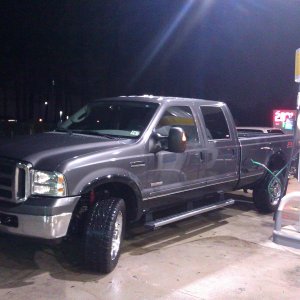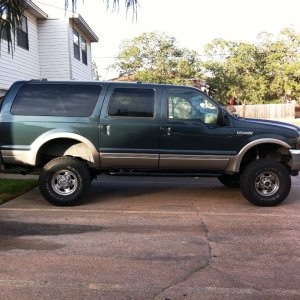Work your truck man, they will be higher than stock. But you are not stock (radiator or charger) so your comparison is already voided by the fact the intercooler is already helped by more air of the chargers not outside the normal range and radiator being more efficient. Either way if you worked the truck compared to stock I still bet they would be higher. Just normal driving or towing my car trailer I cant tell a difference, but throw 18000# that is 13.5' high up a long 7+% grade. That is being worked. See below by what I mean. Plus you having humidity and me not, helps in the exchange of heat. Think of spraying your radiator with water, it will cool off much quicker than with dry air.
You are correct some, but a little off.
I think you are trying to combine the two exchanges of heat, the charged inside and the cooling medium outside. The outside no matter what occurs will always have a higher temp difference across it if a heat exchanger is more efficient, it is part of Thermo and Heat and Mass Transfer, just trust me on this one. If you want proof I can name a few books to read.
When you have a heat exchanger, you need a temp difference to exchange heat.
The greater the temp difference you can get the higher the efficiency of the heat exchanger. Now if you have a higher efficiency exchanger, and have them stacked, like our trucks, the back one the temp difference across it cant be as high as it was with a not so efficient exchanger in front.
The more efficient intercooler is only really beneficial when working the truck, sitting, unloaded, etc. the stock one is more than sufficient. If you hooked up temp sensors you would see what I am talking about. You can only remove so much heat and no exchanger is going to be 100%, as in charged air being the same temp as the cooling medium, outside air in this case.
I am just going to throw some numbers out, not tested numbers just for explanation.
Say 100 degrees outside air.
Stock example
Hot side into the intercooler is say 200 degrees.
Cold Side out of the intercooler is 150 degrees.
The air over the intercooler goes from 100 to 120.
You are trying to cool the radiator with 120 degree air, not 100.
Aftermarket
Hot side into the intercooler is say 200 degrees.
Cold Side out of the intercooler is 120 degrees.
The air over the intercooler goes from 100 to 150.
You are trying to cool the radiator with 150 degree air, not 120 like the stock one.
With the more efficient radiator, it can only help so much, what the thermostats start to open which I think one is at 190, my truck if I keep the RPM's down will run 194 ECT and 198 EOT range.

















